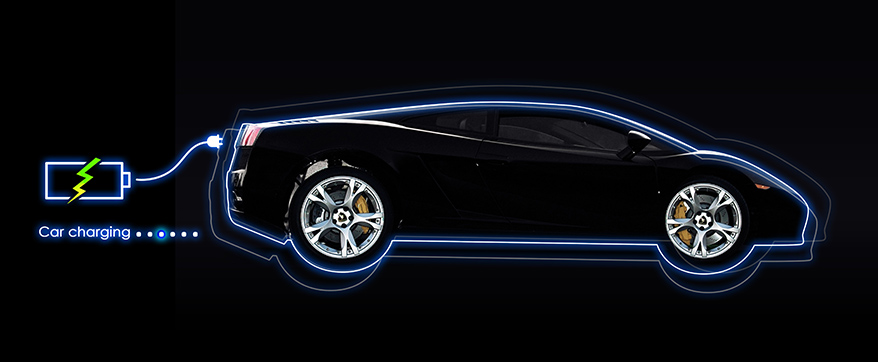Modular Battery- Definition, Design And Usage
Jun 12, 2020 Pageview:2181
Have you been wondering what modular battery is and how they are used in the modern world? If so, then today, we'll discuss all there is to know about modular battery and its design. With the increased use of this battery type, even consumers are becoming curious about the technology. So, let's begin.
What Is A Modular Battery?
A modular battery is an advanced energy solution. It can be connected in both series and parallel as per requirement to increase the voltage and capacity. Modular batteries are widely used for devices that need high voltage or high capacity to operate smoothly.
This type of battery is often used for devices such as:
Solar & Wind energy storage
Portable Medical Equipment
Marine Travel
Recreational Vehicle
Off-Grid & Micro Grid System
Communication Power System
Backup System & UPS
Emergency Lighting Power
CCTV Security & Protection System
All the devices listed above can only operate at high capacity or high voltage. The modular concept was introduced to allow the manufacturers to design a battery whose capacity, voltage, and size can be customized easily. In general, the modular batteries are known as flat module battery as well.
Whether it is an electric vehicle or a UPS system, having an efficient battery system is crucial. That's why the more you learn about the technology. It'll be easier for the consumer to pick the best type of battery.
How Do You Design A Modular Battery?
When it comes to modular battery design, they offer a wide array of advantages. It provides flexibility with the voltage and cells so that they can be placed together in the smaller spaces. With the help of modular design, you'll be able to build a larger distributed battery system that consists of multiple battery packs.
The modular battery allows easy handling of the cells contained in the battery pack. It even allows a manufacturer to design an autonomous battery pack with a separate electrical and thermal management unit. The design was proposed so that the battery pack will have a simple and reliable building block.
To achieve the design, the module has a Cell Module Controller unit, which also serves as a cell temperature monitor. It is the CMC that handles most of the tasks in the battery pack. From monitoring each cell's voltage to balancing them after discharge, CMC can help you achieve the ideal State of Charge in the battery pack. In the cell design and development phase, the best method is analyzed that suits the specific battery needs.
It entirely depends on the purpose of the battery design. Due to the production diversification and different areas of usage, there are custom designs available. The design process is quite difficult, to sum up in this article only. But we can highlight the various phases involved in the process.
The first step is the mechanical design and module assembly. The active elements of the cell with its shape and size are determined in it.
In the next phase, the module's outer dimensions are defined with precision. Along with this, the volume for the connection and PCB is also defined clearly.
After the structure, the ancillary parts are considered. It is done according to the properties the manufacturer wants in the design, such as mechanical absorber, thermal conductor, and other benchmark features.
The third stage of Modular battery design is the geometry definition. Various materials of the battery pack are fixed in this phase. From frame, heatsinks, thermal paste, and mechanical absorber, all components are tested and fixed.
The stage fourth of the design phase includes module details and Battery Management System detailing. Module functions handle cell voltage, temperature, balancing slave, etc. And BMS functions include SOC, SOH, TMS, and balancing Master.
As long as the methodology is followed carefully, it is assured that the battery pack assembled in the last phase will be much more optimal and efficient.
How Do You Use Modular Battery System?
Now that we know that modular battery design takes care of high voltage and high current requirements. By meeting the energy and power specifications, you will be able to use the modular system for all kinds of devices. The chemistry of individual cells allows the designers to increase the voltage range. The cells are stacked in such a way that its performance will also improve.
The total pack energy and power is computed by using a very simple formula. By following the regulation of the design, the battery pack turns out to be economical and efficient. It is the modular battery that fulfills the requirement of large-scale battery storage systems because it can be used for the following:
Cell Voltage Management
Cell Temperature Monitoring
Battery Current Management
Overall Battery Voltage Management
By using the modular battery system, you will be able to design a battery that is suitable for large electrical grids as well as for household inverters. The modular architecture serves as an ideal controller as a high voltage system can't be managed by the typical controllers. It's because of the voltage shift between the cells that are used in the battery pack. The large scale battery often contains more than 15 cells, which are hard to maintain individually.
However, by using a modular architecture for the battery system, a battery can communicate with up to 255 modes at the same time and manage them. One thing that the consumers must keep in mind about charging a modular battery system is that it requires modular charging as well. In general, the battery pack with series or parallel connected cells requires a series or parallel charger, respectively. Fortunately, the modular battery pack can do the same with a single charger and without having the need for a separate voltage regulator.
Leave Message
Hottest Categories
-
Hottest Industry News
-
Latest Industry News











